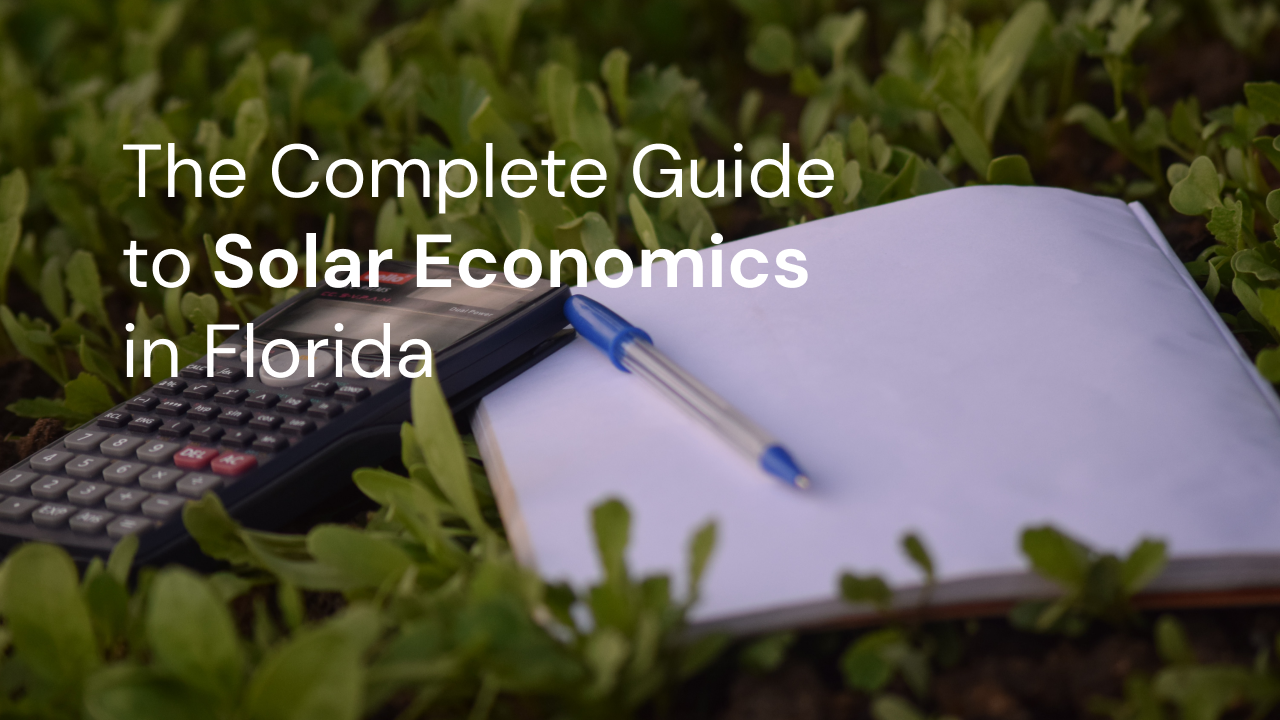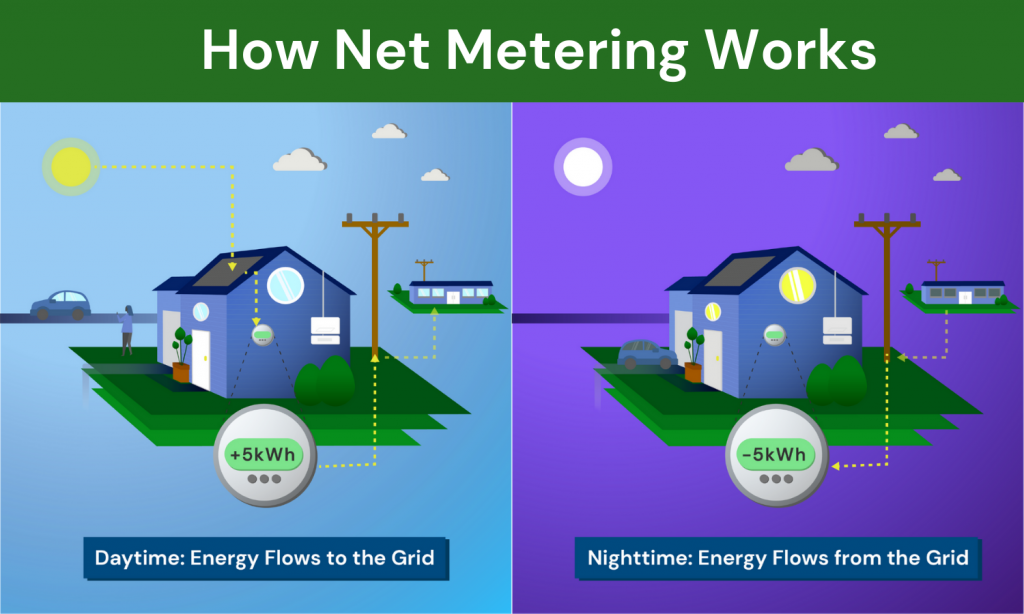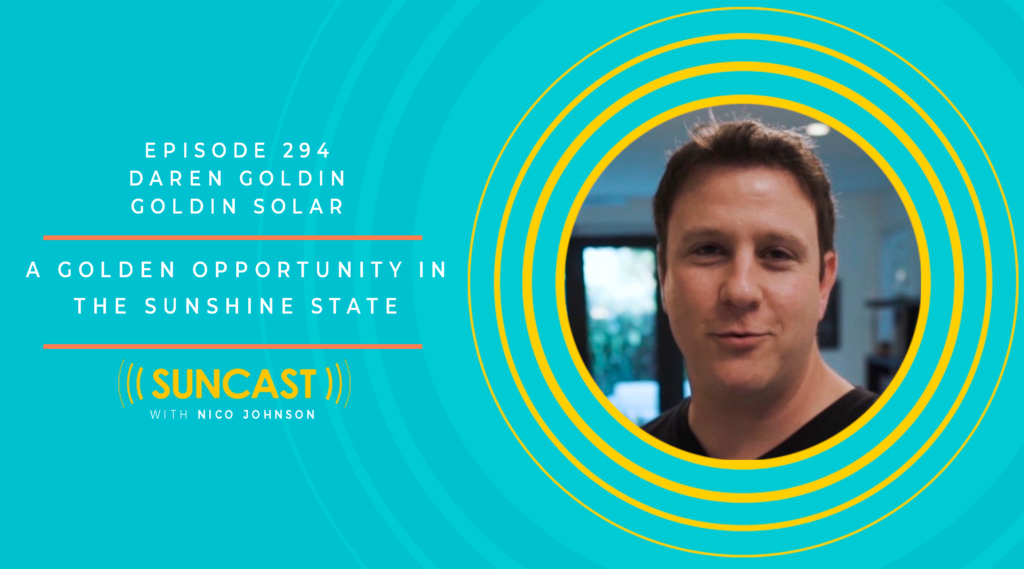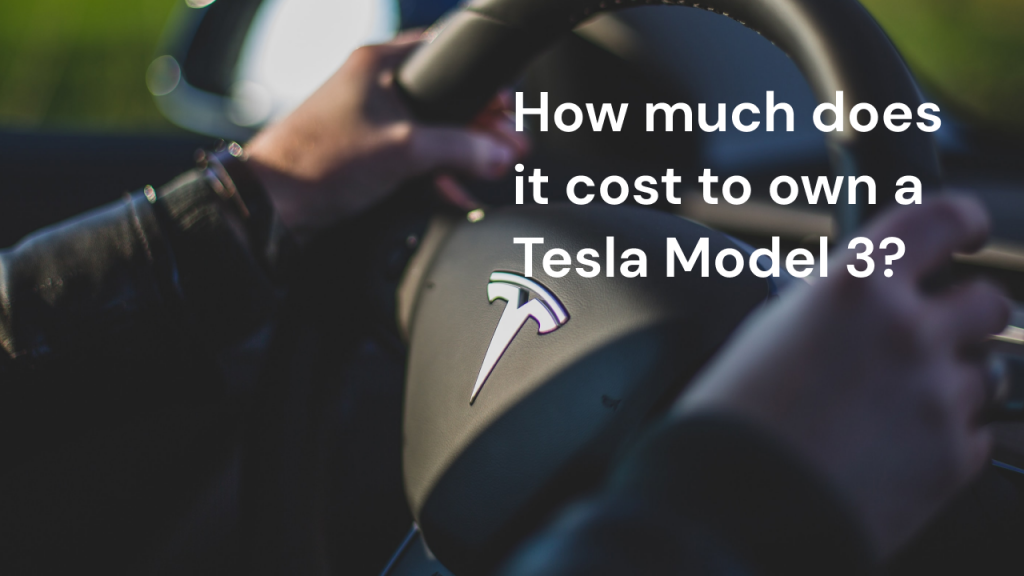Going solar in Florida helps many homeowners save money and reduce their carbon footprint. The economics of going solar are very different from the economics of many other purchases. This is because paying for solar can reduce your cost of living by replacing your electric bill. Therefore, unlike other home improvement options, going solar is truly an investment.
The precise economics of going solar depend on a variety of factors. In this guide, you will learn about the factors that we use at Goldin Solar to ensure that each solar plan we create is as accurate and comprehensive as possible.
Here are the factors that influence the cost of a solar installation (in approximate order of importance):
- Sizing the system
- Payment options
- Government incentives
- Utility energy policies (net metering)
- Maintenance + repair
- Home value + selling your home
We will consider how each of these factors affects the economics of going solar.
Choosing the Right Size of Your Solar System
Sizing the system properly will have the most significant impact on how the finances shake out. Size is generally measured in kilowatts (kW) and relates directly to the number of solar panels on your house. Too small, and you will still owe your utility every month. Too big, and your solar system will be more expensive without producing additional return. We’ll talk more about why overbuilding a system is a bad idea in section 4.
There are three primary elements to consider when deciding on the right size of your system:
-Your energy needs
-Your roof’s solar potential
Energy Needs
Understanding your current energy usage is how we determine how much solar energy to design for. Many homeowners seek to become “net-zero,” meaning that, on average, they generate as much energy as they consume in a month.
Of course, your future energy needs are uncertain. That’s why we look at a record of previous energy usage as reported by your utility’s billing statements. Since energy needs vary seasonally, we like to examine a minimum of 12 months of billing statements. This gives a good estimate as to the energy you consume in a typical month. For reference, the average consumption in Florida is 1,370 kWh per month (US Energy Information Administration).
Next, you might want to consider any plans you have to install major appliances which will affect your energy usage. If you’re planning to install a pool pump, add another fridge, or get a plug-in electric vehicle, your future energy needs will likely be higher than they were over the last 12 months. We can size a slightly larger system to account for future increases in your energy use.
Some solar providers will offer a hot water heater or other appliance and pack the cost into the price of the solar. The reasoning behind this is that a more efficient appliance will lead to less energy consumption, which leads to a smaller solar requirement, which ultimately saves them money. The problem with this strategy is that it is impossible to know how much energy an appliance in your home uses. This makes it risky to design a solar system based on predicted improvements in efficiency from new appliances. Too often this strategy results in solar providers underquoting homeowners to make a proposal look more appealing. This creates disappointment for the homeowner when the smaller solar system doesn’t cover energy needs and you are still left with half of your utility bill to pay each month. That’s why we don’t offer efficiency upgrades at Goldin Solar.
Rooftop Solar Potential
Rooftop solar potential is the quantity of sunlight that is available to be collected on a roof. It depends on the amount of time that sunlight hits your roof and at what angle. If you have higher solar potential, a smaller system size will be required because each panel will be able to produce more energy. If you have lower solar potential due to shading or climate, you will need more panels because each panel will be producing less energy.
Many factors must be considered to determine rooftop solar potential. At Goldin Solar, our account managers create simulations of your estimated production using engineering software. These simulations include weather patterns, temperature, shading and other roof-specific factors.
Low rooftop solar potential is one of the most common reasons why solar doesn’t pencil out for people. Sometimes, it can be solved by trimming trees or removing other obstructions, but sometimes this isn’t possible (if shading is due to a building or trees on a neighbor’s property, for example). At Goldin Solar, we always make the professional decision and advise homeowners against solar if there is too much shading or otherwise low solar potential.
Local Regulations
Here in Florida, residential solar systems fall into one of two regulatory categories: Tier I and Tier II. The cutoff between them is 11.7 kW DC (10 kW AC). The primary difference between the categories is that Tier II systems require additional insurance. A Tier II system requires that the homeowner carries at least $1M in liability insurance on the home.
We work closely with insurance agents to make sure that we get you the best deal on insurance for your system. A typical annual cost for $1M in liability insurance is $180 per year. For most homeowners, if their energy requirement is above 10 kW, $180 per year for insurance is more than offset by their energy savings.
Payment Options
Goldin Solar offers two payment options for residential customers: cash purchase and financing. Some companies offer a third payment option, leasing, which benefits the provider but offers little benefit for the average homeowner.
Cash vs Financing
A cash purchase means a longer break-even time but a smaller overall cost. The typical system purchased with cash will pay itself back in 5-7 years.
On the other hand, financing your system will have a higher cost in the long term (due to accumulated interest) but is more accessible to the typical homeowner (you can finance with $0 down) and generates immediate money savings (the monthly loan payment can replace your electric bill). In 2020, interest rates remain low, and our financing customers see an average interest rate of 5%, with the lowest being 2.99%.
Here are example scenarios calculating expected savings from going solar.
Solar Incentives in Florida
Florida has state and federal tax incentives for solar. At a federal level, Floridians can take advantage of the Federal Investment Tax Credit (ITC). The ITC is a federal tax rebate. The current ITC rate is 26%, which decreases the purchaser’s tax liability by an average of $7,800. However, the ITC is disappearing, so the best time to go solar to save money is right now. The ITC will disappear altogether by 2022.
As a tax credit, the ITC does not offer equal benefit to everyone. Those who do not have any tax liability do not benefit. However, the tax credit will roll over to the following year if your tax liability is less than the credit amount.
Florida Utility Policies
Utility policies affect the economics of going solar in two primary ways: energy pricing and net metering.
Energy Prices in Florida
The price that the utility charges affects the economic viability of going solar because more expensive energy from the utility means it is easier for solar to be cost-competitive. Here in Florida, utility prices are generally low compared to other populous states like New York and California, which is a big part of the reason the Florida solar industry has lagged behind other states with similar solar potential.
The average Florida utility rate is about $0.12/kWh. In comparison, the average cost for solar is about $0.05 per kWh. The average residential energy consumption in Florida is 1,371 kWh per month, which means the average electric bill in Florida is about $160.
Another thing to consider regarding your cost of energy with solar compared to your utility is that the cost for solar is frozen, while utility companies increase their rates over time. A conservative estimate for the increase in utility rates is 2% annually. After 25 years, that’s a 62% increase. So by going solar today, you are protecting yourself from future rate increases.
Net Metering in Florida
Solar produces energy inconsistently and at inopportune times. Peak solar generation occurs when people are away from home while peak energy use occurs in the mornings and evenings when the sun isn’t strong.
Net metering is the sale of solar energy back to the utility when excess is produced. The solar owner earns a credit for that energy, so they can buy energy from the grid when they need it. In Florida, this exchange happens at a one-to-one rate, meaning that customers buy energy from the utility (like FPL) at the same cost they sell the excess for. There is no net cost to the consumer for selling and buying a unit of energy based on the net metering policies of FPL and in Florida at large.
Net metering does not allow you to earn significant money from your solar panels if they are producing more energy than you consume. The value of the credit you receive from the utility is much lower than the value at which the utility sells energy to others. This means it is in your economic best interest to size your solar system to be the smallest possible to meet your energy needs; if your system is bigger than you need, it will be more expensive and won’t save you any additional money.
Solar Array Maintenance + Repair
So the cost of financing a solar array is cheaper than what you pay to the utility company for energy, but what about other costs, like maintenance and repair?
Maintenance
The primary maintenance required to keep your solar system running smoothly is cleaning the panels. Cleaning the panels allows for greater light penetration and therefore greater energy generation efficiency. Many choose to clean their solar panels once a year, and the average cost nationwide when hiring a professional team is $300-430. This is generally a small percentage of the overall savings from eliminating your electric bill and replacing it with solar. Here in Florida, we have found that our seasonal rains do a good job of cleaning panels for us.
Repair
Repair costs for a solar system can be significant if you aren’t protected by warranties and insurance. It’s important to ensure you are covered by a variety of warranty types: installation, manufacturing, and performance. Manufacturing and performance warranties are offered by the hardware manufacturers. Installation warranties are offered by your installer. Goldin Solar and our suppliers offer complete warranties at no additional cost. Head to our warranty page to learn more about the warranties Goldin Solar offers.
Home Value and Selling Your Home
Many solar customers wonder about how solar will affect their ability to sell their home. New research shows that homes with solar sell for an average of 4.1% more. In Orlando, the average home with solar sells for 4.6% more. And with 80% of homebuyers stating that energy efficiency is important for their buying decision, homes with solar are likely to sell more quickly as well.
Luckily for the homeowner, the increased value your home gets from solar is not counted when your property taxes are assessed, so solar won’t make your taxes go up. Additionally, the increased value from solar is generally not enough to put your home in a new insurance bracket, so your insurance costs are unlikely to increase unless you go with a Tier II system (see System Sizing above for more information about solar tiers in Florida).
Conclusion: Solar Economics in Florida
When all factors are considered, it makes sense that Florida has one of the fastest-growing solar markets in the United States. The benefits to be gained in terms of energy savings, home value, and climate change mitigation are highly appealing to the average homeowner. Immediate savings are often available without putting a single penny down. Florida has high solar potential, friendly net metering policies, and flexible payment options.
The next step in the journey of going solar is understanding the options available in terms of technology and contractors. There is a huge number of solar providers to choose from in Florida, from some of the biggest installers in the nation to the tiny mom-and-pop operation. Picking a solar provider is challenging. Factors to consider include their choice of hardware (solar panels, inverters, storage options), warranty offerings, and overall reputation. You can learn more about the questions to ask when choosing a solar contractor in this article.





